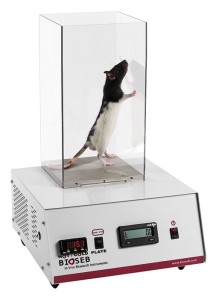Authors
Lustyk K, Sałaciak K, Jakubczyk M, Jastrzębska-Więsek M, Partyka A, Wesołowska A, Marona H, Pytka K
Lab
Faculty of Pharmacy, Jagiellonian University Medical College, Krakow, Poland
Journal
Neurochem Res
Abstract
Anxiety is a common mental disorder, and its prevalence has lately increased because of the COVID-19 pandemic. Unfortunately, the available anxiolytics are often ineffective, and most possess addictive potential. Thus, searching for novel compounds is essential. In our previous studies, we selected a multimodal compound, HBK-15, which showed a fast antidepressant-like effect in animal models of depression. HBK-15 demonstrated a high affinity for serotonin 5-HT1A receptors and moderate for 5-HT7, dopamine D2, and α1-adrenoceptors. Based on the receptor profile and preliminary studies, we aimed to investigate the anxiolytic potential of HBK-15 using the conditioned-response rat model of anxiety, i.e., the Vogel drinking test. We performed hot plate and free-drinking tests to exclude false positive results in the Vogel test. Using radioligand binding studies, we also investigated the affinity of the compound for the selected biological targets, which play a role in anxiety. Our experiments revealed that HBK-15 showed an anxiolytic-like effect in rats (5 mg/kg) without influencing the pain threshold or the amount of water consumed in the free-drinking test. Furthermore, the tested compound did not show a significant affinity for the selected biological targets, which suggests that its anxiolytic-like mechanism of action could be connected with the interaction with other receptors. This study indicates that multimodal compounds with a receptor profile similar to HBK-15 could be an attractive therapeutic option for patients with a generalized anxiety disorder. However, more studies are required to determine the exact mechanism of action of HBK-15 and its safety profile.
BIOSEB Instruments Used
Cold Hot Plate Test (BIO-CHP)
Source :

 Douleur - Allodynie/Hyperalgésie Thermique
Douleur - Allodynie/Hyperalgésie Thermique Douleur - Spontanée - Déficit de Posture
Douleur - Spontanée - Déficit de Posture Douleur - Allodynie/Hyperalgésie Mécanique
Douleur - Allodynie/Hyperalgésie Mécanique Apprentissage/Mémoire - Attention - Addiction
Apprentissage/Mémoire - Attention - Addiction Physiologie & Recherche Respiratoire
Physiologie & Recherche Respiratoire




































 Douleur
Douleur Système Nerveux Central (SNC)
Système Nerveux Central (SNC)  Neurodégénérescence
Neurodégénérescence Système sensoriel
Système sensoriel Système moteur
Système moteur Troubles de l'humeur
Troubles de l'humeur Autres pathologies
Autres pathologies Système musculaire
Système musculaire Articulations
Articulations Métabolisme
Métabolisme Thématiques transversales
Thématiques transversales Congrès & Meetings
Congrès & Meetings 